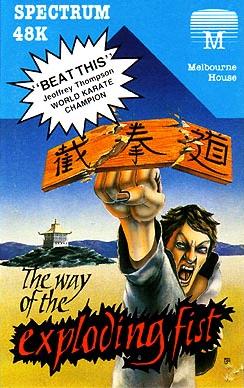
The Way of the Exploding Fist is a 1985 fighting game based on Japanese martial arts developed by Beam Software, by a team consisting of Gregg Barnett, Bruce Bayley, Neil Brennan and David Johnston. Originally developed on the Commodore 64 and published in May 1985 by Melbourne House, ports were made for Amstrad CPC, ZX Spectrum, BBC Micro, Acorn Electron and Commodore 16.

Your Sinclair, or YS as it was commonly abbreviated, was a commercially published and printed British computer magazine for the Sinclair range of computers, mainly the ZX Spectrum. It was in circulation between 1984 and 1993.
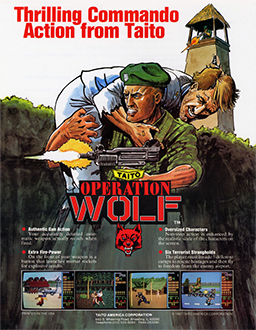
Operation Wolf is a light gun shooter arcade game developed by Taito and released in 1987. It was ported to many home systems.

Ghostbusters is a licensed game by Activision based on the film of the same name. It was designed by David Crane and released for several home computer platforms in 1984, and later for video game console systems, including the Atari 2600, Master System and Nintendo Entertainment System. The primary target was the Commodore 64 and the programmer for the initial version of the game was Adam Bellin. All versions of the game were released in the USA except for the Amstrad CPC and ZX Spectrum versions, which were released only in Europe, and the MSX version, which was released only in Europe, South America, and Japan.

Skool Daze is an open world action-adventure game released by Microsphere in 1984 for the ZX Spectrum and ported to the Commodore 64 the following year. It was written by David Reidy, with graphics designed by Keith Warrington. The game was commercially and critically successful, and praised for its original concept. It has since been regarded as one of the pioneers of the sandbox game genre.

Silkworm is a horizontally scrolling shooter developed by Tecmo and first released for arcades in 1988. In 1989 it was ported to the Amiga, Atari ST, Commodore 64, ZX Spectrum, Amstrad CPC and NES (1990) systems by The Sales Curve and released by Virgin Mastertronic.

Back to Skool is an open world video game, sequel to the Skool Daze, created by David Reidy with graphics by Keith Warrington for the ZX Spectrum and released by Microsphere in 1985. The gameplay is very similar to - if more advanced than - Skool Daze, incorporating most of the same characters, gameplay elements and graphics.

Graphic Adventure Creator is a game creation system/programming language for adventure games published by Incentive Software, originally written on the Amstrad CPC by Sean Ellis, and then ported to other platforms by, amongst others, Brendan Kelly (Spectrum), Dave Kirby and "The Kid" (C64). The pictures in the demo adventure, Ransom, were made by Pete James and the box cover art by Pete Carter.
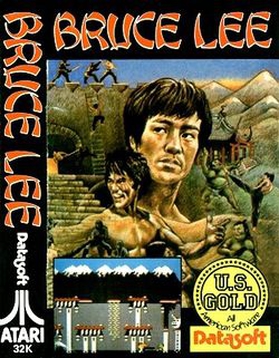
Bruce Lee is a platform game written by Ron J. Fortier for Atari 8-bit computers and published in 1984 by Datasoft. The graphics are by Kelly Day and music by John A. Fitzpatrick. The player takes the role of Bruce Lee, while a second player controls either Yamo or alternates with player one for control of Bruce Lee.
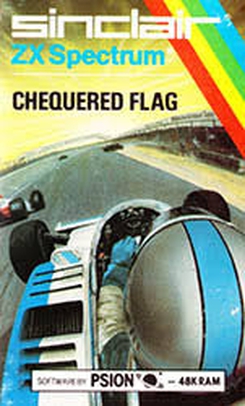
Chequered Flag is a racing video game developed by Psion Software and published by Sinclair Research in 1983. It was the first driving game published for the ZX Spectrum and one of the first computer car simulators.

RoboCop is a beat 'em up / run and gun video game developed and published by Data East for arcades in 1988 based on the 1987 film of the same name. It was sub-licensed to Data East by Ocean Software, who obtained the rights from Orion Pictures at the script stage. Data East and Ocean Software subsequently adapted the arcade game for home computers.
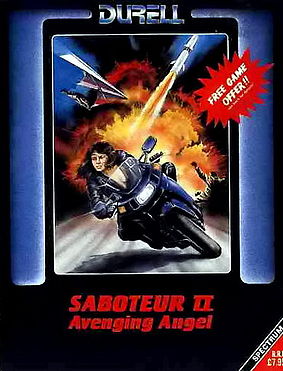
Saboteur II: Avenging Angel, also known as Saboteur 2, is an action-adventure game created by Clive Townsend and released by Durell Software in 1987 for the ZX Spectrum, Amstrad CPC, Commodore 64, and MS-DOS compatible operating systems. A sequel to 1985's Saboteur, the player controls a sister of Ninja from the first game on a mission to avenge his death. Saboteur II was one of the first action-adventure games with a female protagonist and was well received by critics.

Jack the Ripper is a text adventure computer game designed by St. Bride's School and released by CRL in 1987 for the Commodore 64, Amstrad CPC and ZX Spectrum home computers. The game is based on the notorious "Jack the Ripper" murders in 1880s London.
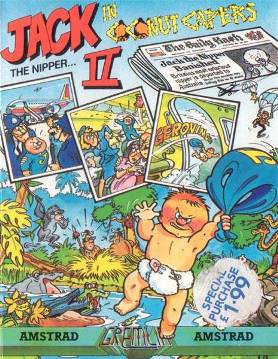
Jack the Nipper II: In Coconut Capers is a video game by Gremlin Graphics released in 1987 for ZX Spectrum, Commodore 64, Amstrad CPC, and MSX. It is the sequel to Jack the Nipper. As with the previous game, Jack the Nipper II is a side-view flip screen game with puzzle solving and platform elements. The false-3D effect has been removed, making the gameplay pure 2D.

Light Force is a 1986 vertically scrolling shooter designed by Greg Follis and Roy Carter, developed by their company Gargoyle Games, and published under their Faster Than Light imprint. It was released for the Amstrad CPC, Commodore 64, and ZX Spectrum platforms.

Grand Prix Simulator is a racing game developed by The Oliver Twins and published by Codemasters for the ZX Spectrum, Amstrad CPC, Commodore 64, and Atari 8-bit computers. The ZX Spectrum conversion was done by Serge Dosang. The game was endorsed by Ayrton Senna's 1986 Formula One teammate Johnny Dumfries.

Gary Lineker's Superstar Soccer is a computer game released in 1987 for the Amstrad CPC, Commodore 64 and ZX Spectrum, published by Gremlin Interactive in Europe, and by Mindscape as Superstar Soccer in the USA.
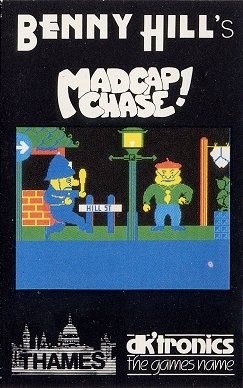
Benny Hill's Madcap Chase is a ZX Spectrum videogame featuring Benny Hill and loosely based on his Thames TV show. It was programmed by Don Priestley and published by DK'Tronics in 1985. The plot involves Benny deciding to help his neighbours by completing a number of tasks for them.

Human Killing Machine is a 2D fighting video game. The game was developed by British company Tiertex, who hired external team Blue Turtle to produce the graphics, and published by U.S. Gold, released in March 1989. It was touted as a sequel to Tiertex's home computer conversion of Street Fighter. It was released for 8-bit and 16-bit home computer formats.
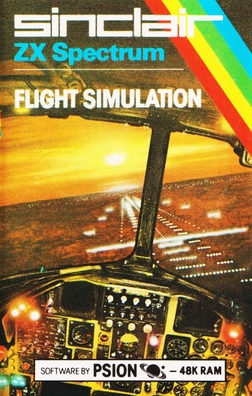
Flight Simulation is a flight simulation program written by Psion and marketed by Sinclair Research for the ZX Spectrum and ZX81 home computers.




















